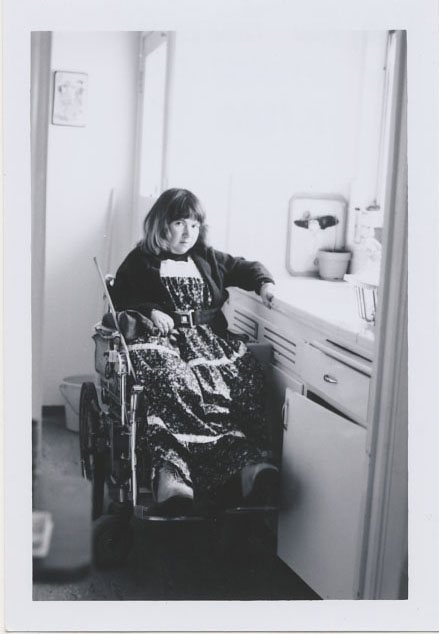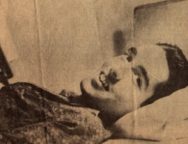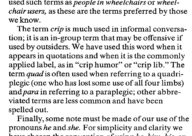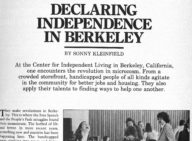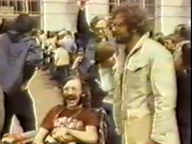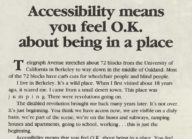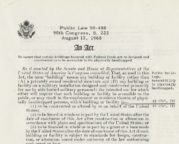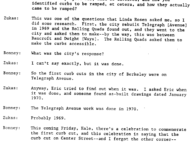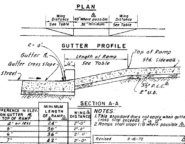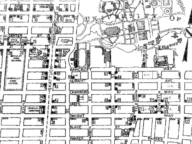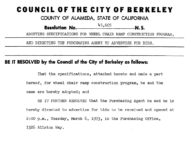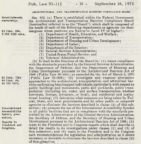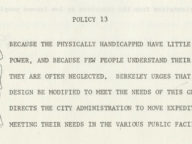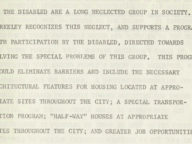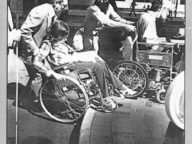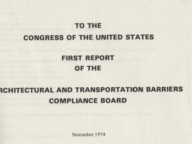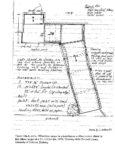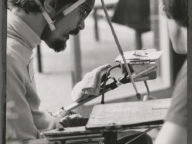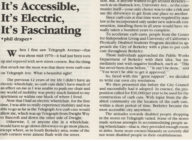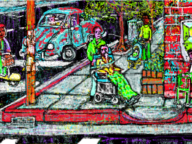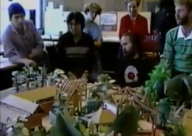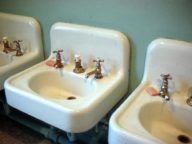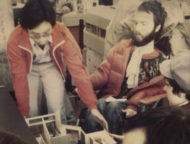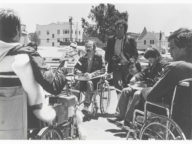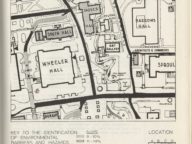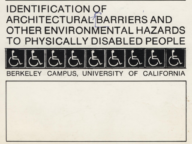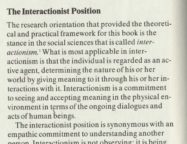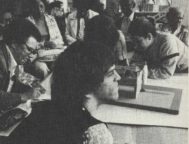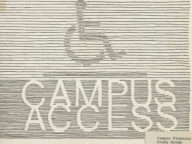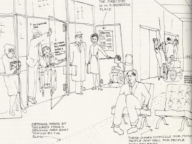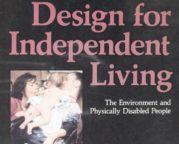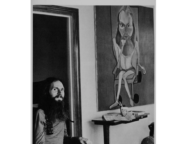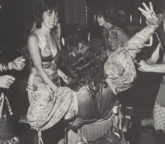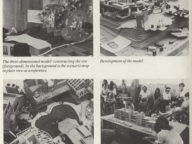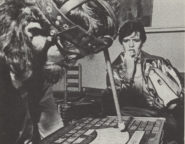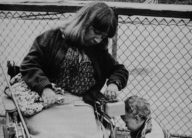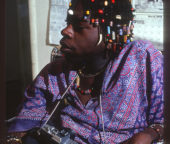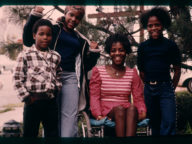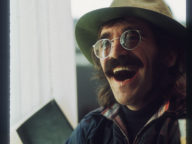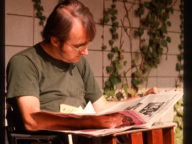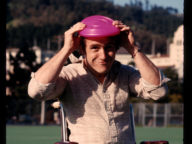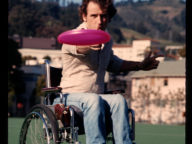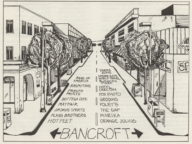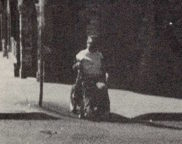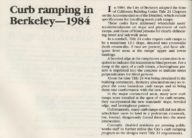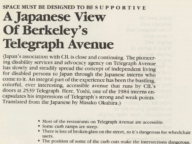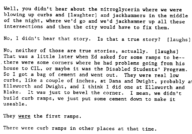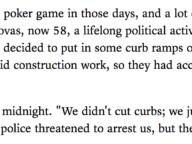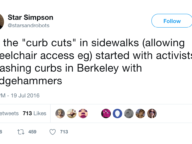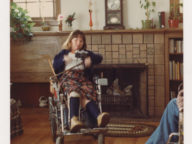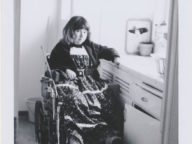A black and white photograph of Mary Ann in a domestic space, likely her kitchen, provides some perspective.
Her sobering, almost stoic gaze commands the viewer’s attention. Her gaze conveys a strength and confidence that’s matured since coming to Berkeley. Significantly, Mary Ann is the only person in the frame. No attendants, no parents, and no medical staff. We can interpret this moment as an exercise of one’s autonomy, perhaps the ultimate form of liberation from institutional life.
Taken in 1980, Mary Ann had already lived in Berkeley for eight years and outside of Cowell Hospital since 1973. When Mary Ann came to Cowell Hospital she was reassured by the medical staff in place, but that slowly changed once she developed relationships with disabled friends who showed her the immense possibilities afforded by living independently. After a year and a half in Cowell, Mary Ann moved into her own apartment with another disabled student. In Design for Independent Living, we get a glimpse of Mary Ann’s new boundaries with regards to attendant care and her aversion towards feeling like a patient:
“Mary Ann’s relationship with her attendants seems typical of a disabled person who has lived in Berkeley for several years and who ‘knows the ropes.’ She, like the others, has come to definite opinions about what makes a good attendant. She is outspoken about not wanting attendants with formal medical training who typically appear dressed in white hospital clothes and call her a patient. ‘No one wants them. They make you feel like you’re sick, really disabled. They remind you of hospitals and institutions.’ According to Mary Ann, those with a medical background enter into their work with a certain set of assumptions of what should and should not be done and of what they will and will not do as professionals. Mary Ann feels that this attitude objectifies the disabled person as a medical problem and limits the kind of social interaction with the attendant that might be desired by the disabled person. She likes to regard her attendants as possible friends. They spend time together inside and outside the apartment. Mary Ann feels that she can call on them in an emergency.” (30)
